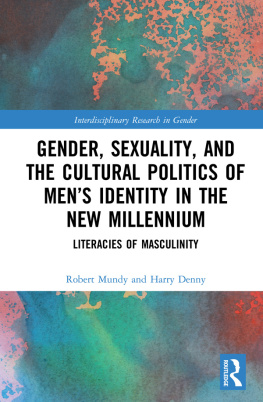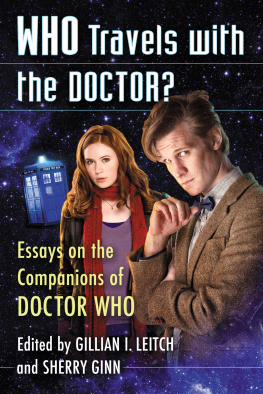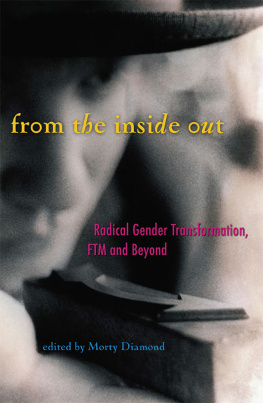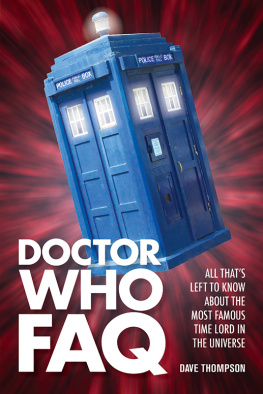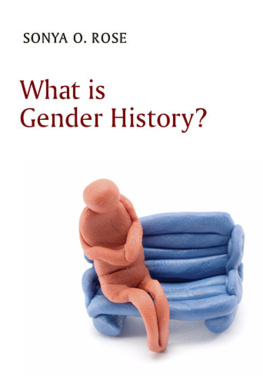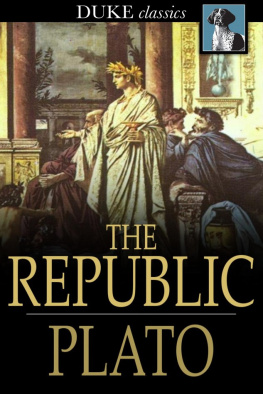Published in 2017 by
I.B.Tauris & Co. Ltd
London New York
www.ibtauris.com
Copyright 2017 Lorna Jowett
The right of Lorna Jowett to be identified as the author of this work has been asserted by the author in accordance with the Copyright, Designs and Patents Act 1988.
All rights reserved. Except for brief quotations in a review, this book, or any part thereof, may not be reproduced, stored in or introduced into a retrieval system, or transmitted, in any form or by any means, electronic, mechanical, photocopying, recording or otherwise, without the prior written permission of the publisher.
References to websites were correct at the time of writing.
Who Watching
ISBN: 978 1 78453 374 8
eISBN: 978 1 78672 146 4
ePDF: 978 1 78673 146 3
A full CIP record for this book is available from the British Library
A full CIP record is available from the Library of Congress
Library of Congress Catalog Card Number: available
Text design, typesetting and eBook by Tetragon, London
Contents
Acknowledgements
This book would never have been written were it not for Kim Akass inviting me to speak on gender and Doctor Who , initially at a one-day symposium and then as a keynote speaker at the academic 50th anniversary conference Walking in Eternity in 2013 at the University of Hertfordshire. Following my keynote speech, Philippa Brewster from I.B.Tauris persuaded me that there should be a book on gender and Who , and the project evolved from there. Thanks, Kim and Philippa, for encouraging me to stir things up.
The supportive and perceptive comments of the anonymous reviewer appointed by I.B.Tauris were incredibly helpful, both in reassuring me that this book was worth writing, and in pointing out some areas for improvement.
Thanks are also due to members of the Summer and Autumn Writing Clubs, whose Facebook sharing of just how hard it is to write a book was incredibly supportive. In addition, as any full-time academic knows, the book would not have been completed without the support (verbal, practical and emotional) of my immediate work colleagues. Thanks, Kate, for allowing me the flexibility to fit this in, and my gratitude goes out to all the MY14ers at the University of Northampton.
Stacey Abbott and Bronwen Calvert deserve special mention our mutual friendship, debate, commentary and sometimes just plain silliness is the definition of academic community. Long live The Trio.
My sister, Fiona, and her three daughters, Eilidh, Ciorstan and Iona, have all contributed to my thinking on the Who series and to the material in this book, not least by forcibly persuading me to watch The Sarah Jane Adventures . Thanks, girls.
And finally, I am indebted to Verity Lambert, Elisabeth Sladen, Julie Gardner, and all the women who helped make Doctor Who the global success it still is, more than 50 years after its debut.
Introduction
I make it up as I go along. But trust me, Ive got history.
The Tenth Doctor, The Runaway Bride
Doctor Who 2006 Christmas special
As one of the longest running science fiction television series ever, Doctor Who has proved its adaptability and its success in terms of longevity: in 2013 it celebrated its 50th year. Like other British franchises featuring male heroes, various actors have played the lead role while striving to retain a core sense of the character and the stories he functions within. Certainly there have been many changes to perceptions and representations of gender since the 1960s. This book, then, gathers together and develops discussion around gender representation in the franchise, looking specifically at how Doctor Who has rebooted its gender representation for a twenty-first-century audience since 2005.
The series set a precedent for reinventing itself when the premise of Time Lord regeneration was introduced in 1966 because William Hartnell could not continue in the central role. Like both Star Trek on television, and the James Bond film series, Doctor Who adopts particular strategies for updating and refreshing its formula. The spin-off series Torchwood (200611) and The Sarah Jane Adventures (200711) also provide new opportunities for renegotiation of gender representation in programmes that are less constrained by a long history and established conventions. Aspects of gender as presented in a range of Doctor Who texts (from the series itself, to its spin-offs, Torchwood and The Sarah Jane Adventures , to minisodes, narrative extensions and other paratexts) are explored in the book, and a variety of perspectives on television cultures, narratives and the TV industry are used to illuminate them.
I am acutely aware that debates about gender, especially in Doctor Who itself, have raged and will doubtless continue to rage, with viewers and commentators offering widely differing interpretations of gender roles in the programmes and their paratexts, of the duty and responsibility involved in creating popular television drama, and of the mission of public service broadcasting.
Ever since the reboot of Doctor Who in 2005, the series, and its expanding franchise, has come under scrutiny for its representations (of race, ethnicity, nationality and sexuality, as well as gender), as might be expected of a flagship BBC production. One headline in a news article covering the publication of Lindy Orthias edited collection of essays, Doctor Who and Race , blared Doctor Who Thunderously Racist ( Telegraph 2013), presumably in an effort to stir up opinion. Yet a decade after the reboot proved that Doctor Who could still engage a contemporary audience, diversity and representation seem to be high on the agenda, attracting comment and debate in mainstream news outlets, as well as on social media and the blogosphere, especially when the focus is a major franchise. Marvels superhero films have come in for criticism, and speculation about how Star Wars: The Force Awakens (2015) would negotiate such issues, given its casting of a young white female and a young black male in lead roles, was succeeded by debates about how effective the characters were. Its huge success on opening weekend suggests that either these things attract audiences or, perhaps, that they do not actively discourage them. When the trailer for the next Star Wars film, Rogue One clearly featuring another female lead was released in April 2016, further debate ensued.
In terms of Doctor Who , now the only continuing television series in the Who stable, things have also been shaken up, perhaps in response to such criticism. With the announcement that actor Matt Smith was giving up playing the Doctor in 2013, speculation erupted about whether a female or a non-white actor might finally be cast. When Peter Capaldi, at 55 an actor much older than previous post-2005 Doctors, was announced as the Twelfth Doctor it seemed an opportunity had been missed. However, his age changed the dynamic, particularly between the Doctor and his female companion, and at the end of the same season, the Doctors arch-enemy and fellow Time Lord, the Master, was revealed to have transformed into a woman, now calling herself Missy. As Catherine Johnson notes, this raised a number of interesting debates around sexuality and gender (2014), and the range of responses to Missy are discussed at more length in .


